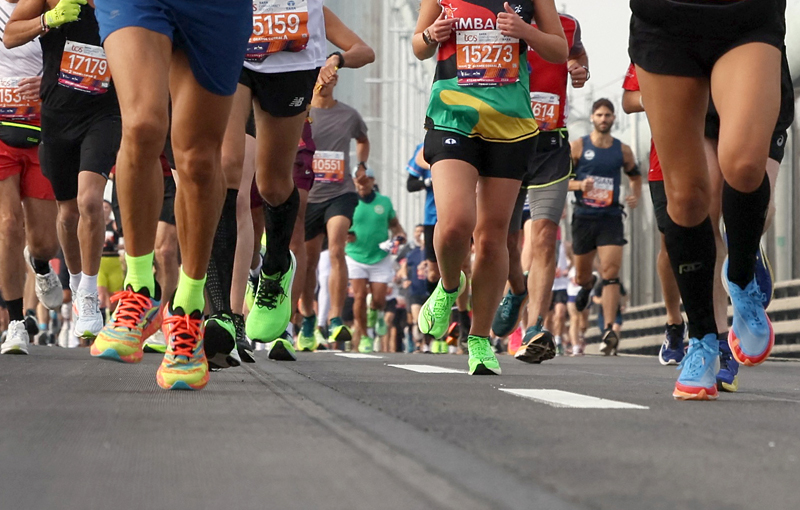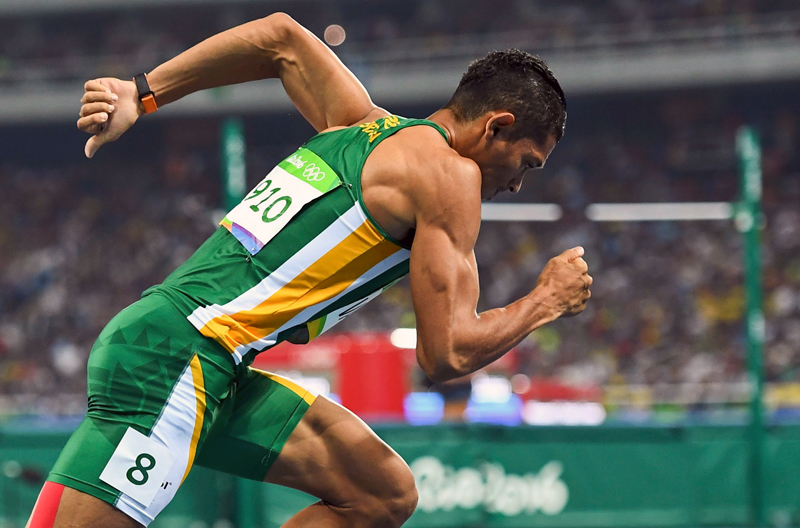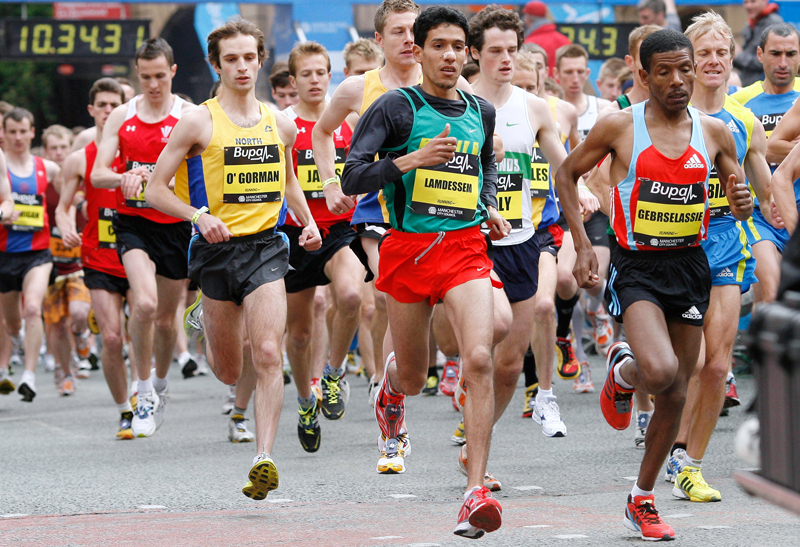Muscles involved: sides of upper back (latissimus dorsi), backs of shoulders (posterior deltoids), backs of upper arms (triceps).Joint motion: shoulder extension.
Sports applicability: sports involving an overhead hitting/throwing motion, eg tennis, the javelin and football throw-in.
Conditioning benefits
- General. The supine straight arm dumbbell pullover can be performed by people with varying degrees of strength, although it becomes more of an advanced exercise when heavy weights or a dynamic throwing type action are used. In these conditions, it should be performed only by the well- conditioned.
- Sport specific. The exercise has a great preconditioning (training to train) value, as it can strengthen soft tissue for much more dynamic sports related activity, thus reducing injury risk.
Start position
- Lie on your back on a bench and place your feet on the floor or, depending on your leg length, a step or similar platform. In achieving this position make sure that your back remains in neutral alignment on the bench (ie neither arched nor rounded) and that your position is stable;
- Hold a fixed-weight non-adjustable dumbbell over your chest with both hands, using a ‘triangular’ grip. Keep your palms up and your fingers pointing away from your head;
- Maintaining a slight bend at your elbows, rotate your shoulders slightly inwards.
Start position
[caption id=" align="alignnone" width="616"] Illustration by Viv Mullett[/caption]Action
- Take the dumbbell back and behind your head by lowering your arms. Don’t allow your elbows to move outside the line of your body;
- Change from lowering to lifting the dumbbell when your upper arms are approximately 20-30° higher than parallel to the floor.
Action
[caption id=" align="alignnone" width="616"] Illustration by Viv Mullett[/caption]Training tips
Avoid hyperextending your wrists, keeping them in a neutral position while performing the exercise.Keep your abdominal muscles braced when lowering the dumbbell behind your head to avoid hyperextending your back.
Start with 4 x 15 repetitions at 50% of 1 repetition maximum (1RM) to a ‘one-up, one- down’ count. Take 90 seconds’ recovery between each set.
Sport specific exercise progressions
Supine bent arm pullover. After assuming the same start position as above, perform the exercise with bent arms – ie with the lower arms held at right angles to the upper arms; this places a different emphasis on the muscles being worked. Perform as above, or by alternating the two versions into a super-set;Fit-ball supine bent arm pullover. Assume a similar starting position, with the upper back supported on the Fit-ball and the feet firmly planted on the floor. While performing either the straight or bent arm pullover, the inherent instability of the ball will call for greater active stabilisation throughout the core. This will be beneficial in two ways:
- More muscle fibre will be recruited from this region;
- The exercise will be more sport specific because the core works to transfer and optimise the power expressed by the arms, as it does in most sports situations.
John Shepherd MA is a specialist health, sport and fitness writer and a former international long jumper










